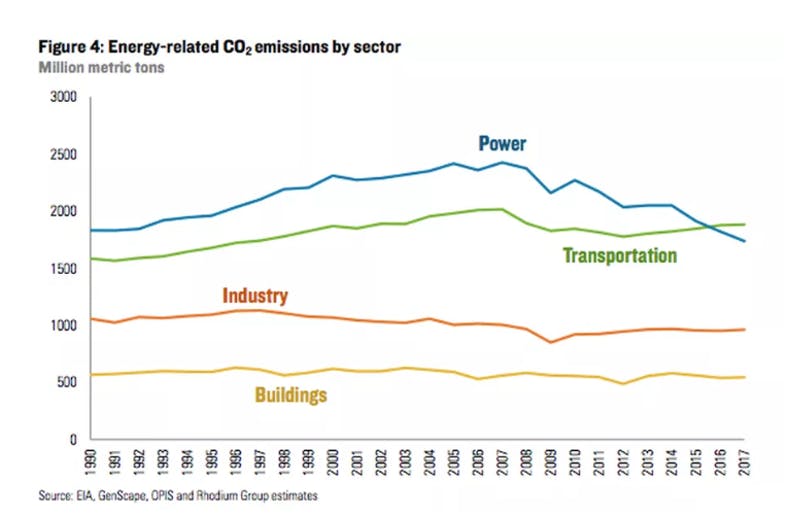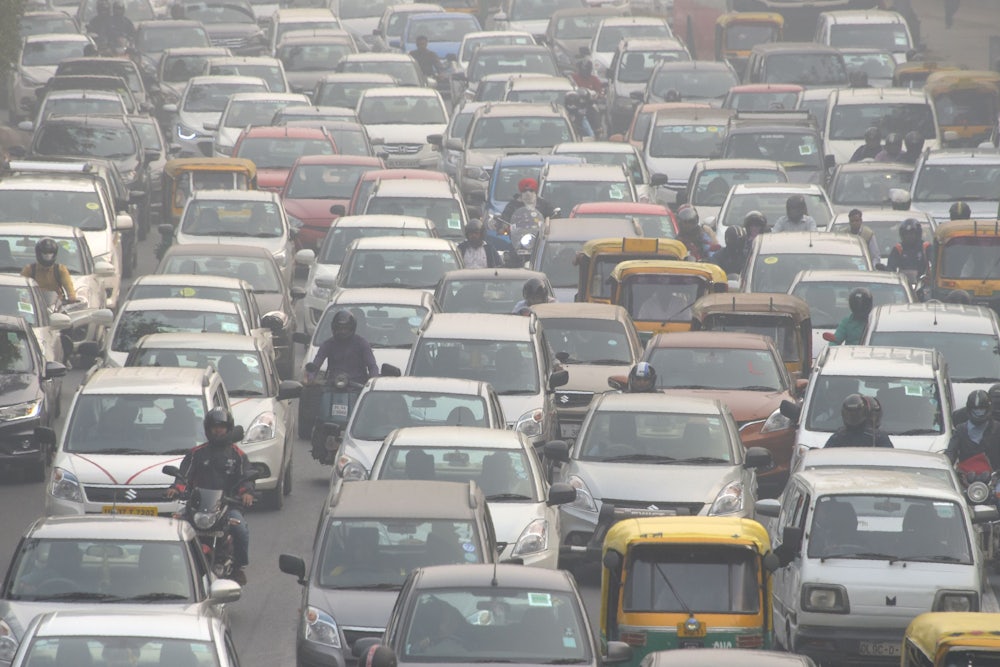Global greenhouse gasses will have increased by 2.7 percent by the end of 2018, according to a grim new report from the Global Carbon Project. Released on Wednesday at the United Nations climate summit in Poland, the report puts a damper on hopes that emissions might soon start decreasing, as they must if catastrophic climate change is to be averted.
Where are all these new emissions coming from? An increase in coal use around the world, notably China, is partly to blame. But in the United States and Europe—the second- and third-largest emitters in the world, respectively—automobiles are among the leading culprits. “We thought oil use had peaked in the U.S. and Europe 15 years ago,” one of the study’s authors, Rob Jackson, told The New York Times. “The cheap gasoline prices, bigger cars and people driving more miles are boosting oil use at rates that none of us expected.”

Cars are becoming as big of a threat to the climate as coal-fired power. The transportation sector is now the largest source of carbon dioxide emissions in the United States, and has been for two years. European countries are seeing similar patterns.
As I wrote in August, the only way to achieve the necessary global reductions in emissions, and therefore reduce climate change, is to reduce emissions from gas-powered automobiles. Governments could require carmakers to improve fuel efficiency (though President Donald Trump recently announced plans to roll back such requirements in the United States). They could invest in infrastructure for electric cars. And cities and towns could improve their public transportation systems. But the only sure solution, right now, is for the world to drive less.
